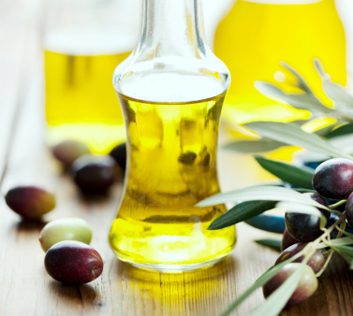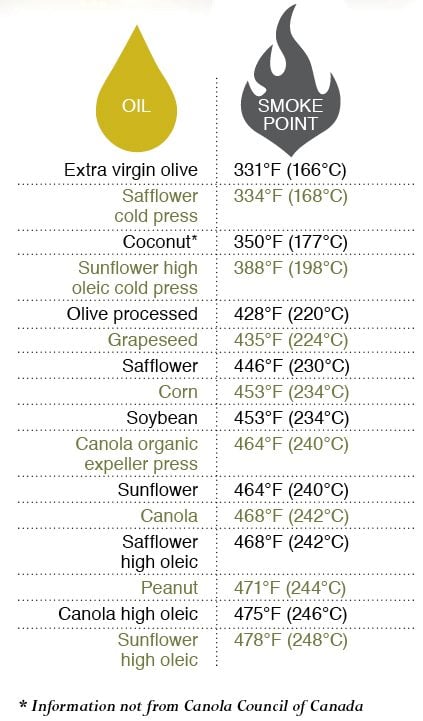The truth about oil smoke points
Rumour has it olive oil is dangerous when heated. Here’s the real story

Source: Best Health magazine, January/February 2014; Image: Thinkstock
The Internet is rife with claims that olive oil should never be heated because ‘the smoke from olive oil is full of toxins’ and ‘it gives off free radicals.’ Sounds scary, right? That’s why we dug deeper to get the facts. (First things first: Studies have shown a diet that includes olive oil may lower the risk of breast cancer and heart disease. A good amount of healthy fats for daily consumption is 30 to 45 mL [two to three tablespoons], according to Health Canada.) The truth is, you can cook with olive oil; just avoid high temperatures. ‘No olive oil, whether it’s regular or extra virgin, should be used for things like deep frying,’ says Sharareh Hekmat, a professor of food and nutritional sciences at Brescia University College in London, Ont.
And that’s not because of toxins or free radicals but, rather, because it has a lower smoke point than many other oils. (The smoke point is the temperature at which the oil starts to break down, and when it has the potential to spontaneously catch fire.) At just 331ºF, extra virgin olive oil has a lower smoke point than regular olive oil (which has a smoke point of around 428ºF). That’s why extra virgin is best used in salad dressings and dips.
You wouldn’t want to waste an expensive olive oil for high-temperature cooking anyway. ‘The heat also reduces the flavour and quality of the oil,’ says John Higgins, director of the George Brown Chef School. In addition, heating it can reduce the oil’s antioxidant levels.
The smoke point of any type of oil can often be found on the label. The Canola Council of Canada offers the helpful chart below. Bonus: There’s a new oil in Canadian kitchens! Find out more about Camelina oil.

This article was originally titled "Oil smoke points" in the January/February 2014 issue of Best Health. Subscribe today to get the full Best Health experience’and never miss an issue!




